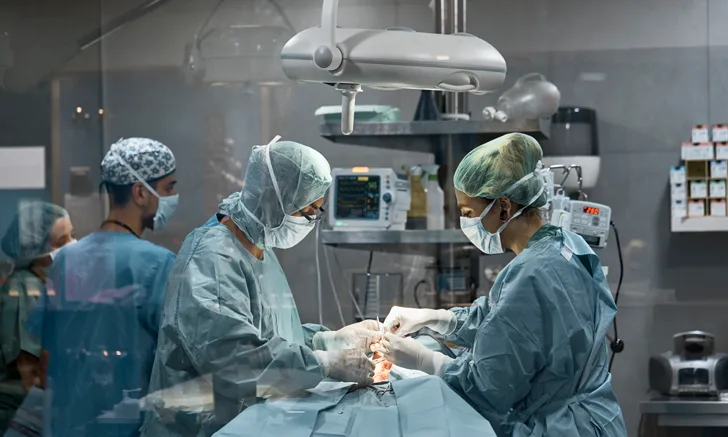
In the literature
Gordo I, Camarasa JJ, Campmany M, Bird FG, Vallefuoco R, Brissot HN. The use of methylene blue to assist with parotid sialadenectomy in dogs. J Small Anim Pract. 2020;61(11):689-695.
The Research …
The parotid salivary gland sits at the base of the ear canal and is covered with a thin capsule that blends into surrounding tissue.1 Disease of the parotid salivary gland is uncommon but, when present, usually requires surgical resection.2 Complete surgical excision can be challenging due to the intimate association of the gland with neurovascular structures.1 Dissection requires a thorough knowledge of surrounding anatomy and meticulous dissection.1 Postoperative complications are common, with facial nerve paralysis occurring in ≤14% of patients.2 Methylene blue has been used successfully in humans undergoing parotidectomy to reduce the incidence of facial nerve paralysis almost 4-fold.3
In this retrospective study, methylene blue was used in dogs to indirectly highlight the facial nerve to preserve this structure during surgical dissection of the parotid salivary gland. Medical records of 7 dogs undergoing parotidectomy at an institution between 2016 and 2019 were evaluated. Surgical intervention was performed on 5 dogs with sialoadenitis and 2 dogs with salivary gland carcinoma. All dogs were placed in lateral recumbency, and a standard approach to the parotid gland was used.1 Methylene blue was diluted 1:12 (0.25 mL in 3 mL of sodium chloride 0.9%). In the 5 dogs with nonneoplastic disease, the parotid duct overlying the ventrolateral aspect of the masseter muscle was dissected free and injected with 1.5 to 3 mL of diluted methylene blue solution using a 22-gauge catheter. In the 2 dogs with neoplastic disease, the solution was injected directly into the gland to avoid compromising oncologic principles with excessive dissection. All procedures were performed without complication, and no neurologic dysfunction was reported. This study supports the use of methylene blue for aid in identification and preservation of the facial nerve during parotidectomy.
… The Takeaways
Key pearls to put into practice:
Surgical dissection of the parotid salivary is difficult and requires precise surgical skills.
Surgeons should be aware of the risk for facial nerve paralysis with parotidectomy.
Injection of the parotid duct or gland with 1.5 to 3 mL of diluted (1:12) methylene blue solution can help highlight the facial nerve.
You are reading 2-Minute Takeaways, a research summary resource presented by Clinician’s Brief. Clinician’s Brief does not conduct primary research.